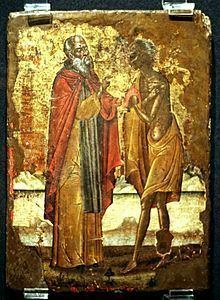Written 1931 Language Italian | First performance 16 March 1923 | |
 | ||
Similar La fiamma, Belfagor, La campana sommersa, Marie Victoire, La bella dormente nel bosco | ||
Ottorino respighi maria egiziaca
Maria egiziaca (Saint Mary of Egypt) is an opera "in three episodes" by the Italian composer Ottorino Respighi. The libretto, by Claudio Guastalla, is based on a Medieval life of Saint Mary of Egypt, contained in the translation into the vernacular of the Vitae Patrum written by Domenico Cavalca.
Contents
The work was originally intended as a concert piece although it has been fully staged in some revivals. It was first performed at Carnegie Hall, New York City on 16 March 1932. The first stage performance was at the Teatro Goldoni in Venice on 10 August 1932. Both the language of the libretto and the music employ archaism; Respighi's score contains stylistic echoes of Gregorian chant, Renaissance music and Monteverdi.
Ottorino respighi maria egiziaca
Instrumentation
Maria egiziaca is scored for the following instruments:
flute , oboe, 2 clarinets, bassoon, 2 horns, trumpet, 2 trombones, harpsichord (or piano), strings.
Synopsis
The prostitute Mary suddenly feels an overwhelming longing to travel to Jerusalem. Here she repents her sins and an angel tells her to go to the desert where she lives in prayer until old age. She is found dying by Saint Zosimas, who digs her grave with the help of a lion.
